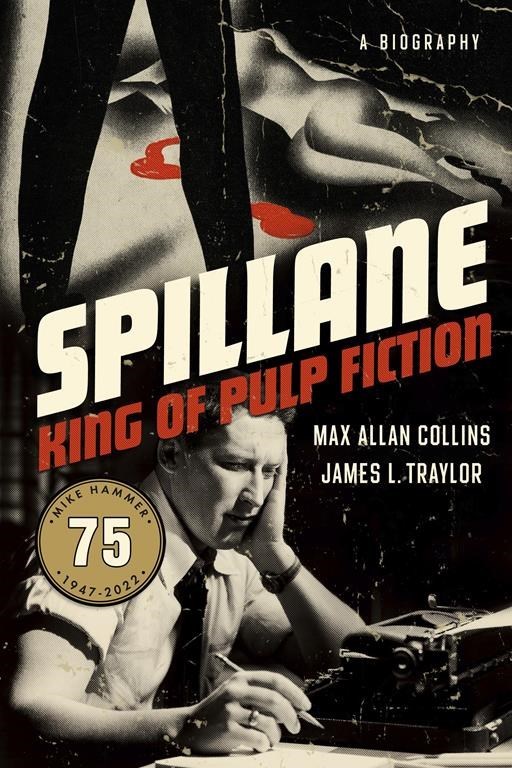“Spillane: King of Pulp Fiction” by Max Allan Collins and James L. Traylor (Mysterious Press)
In fiction an “unreliable narrator” can't be trusted as he or she spins the story at hand. In real life the term “fabulist” is used by those seeking a softer word than “liar.”
Friends of the popular crime writer Mickey Spillane noted that Spillane could pile the tall tales pretty high when talking about his own life, a character trait they acknowledged with fondness.
The authors of the biography “Spillane: King of Pulp Fiction” wisely dug deep into available records, not an easy task, to tease out fact over fancy. And they didn't get too caught up in judging their subject for what's true and what's not — after all, Spillane was writing fiction for a living, not running for Congress.
Spillane (1918-2006) was born in Brooklyn, New York, and raised in Elizabeth, New Jersey, his father a sometime bartender who worked other jobs here and there and his mother a homemaker. Football and swimming were for fun, but writing combined young Mick's interests in making money and storytelling. Comic books were his initial outlet, and after service as a flying instructor during World War II he turned to writing novels.
He invented private eye Mike Hammer, one of crime fiction's icons, with the book “I, the Jury” (1947). That tale of revenge and those that followed were eaten up by the general public — mainly readers less interested in literature than a pulse-pounding narrative with what passed in the postwar era for startling violence and sex.
Spillane was so successful, selling title after title in the millions, that his own name became iconic in the world of pulp fiction. Along the way he fashioned a brash and brassy public persona that didn't take itself too seriously. For years he parodied his own writing and himself in a smile-inducing series of Miller Lite commercials.
Away for the typewriter Spillane could come across as a bundle of energy seeking a focus. After his sixth Hammer book, “Kiss Me Deadly,” appeared in 1952, he didn't write another for a decade. During that time he mainly pursued film and television projects while blissfully raising a family in rural New York. (He became a Jehovah's Witness, publicizing his new piousness while ignoring church rules when it suited him.) He burst back into bookstores in 1962 with a new Hammer novel, “The Girl Hunters,” and pumped out five more as well as other novels and short stories until his death.
Not only does “Spillane: King of Pulp Fiction” try to separate fact from fiction, it argues that Spillane was a stylist — “a master of mood, tone and plot” — rather than a colorful hack and that his writing is worthy of study.
It's fair to question whether crime writer Max Allan Collins is the best choice to tackle a biography of Spillane. The two were close friends — Spillane was godfather to a Collins child — and Collins co-wrote or finished several of Spillane's manuscripts. That gives his praise of Spillane as an artist a different ring when one considers he's in business with a close friend. Still, Collins and co-writer James L. Traylor make a sturdy case for Spillane's value beyond mere commercial appeal.
Like Dashiell Hammett's Sam Spade and Raymond Chandler's Philip Marlowe, Spillane's Mike Hammer has been eclipsed by more contemporary fictional characters who speak to today's readers. It's somewhat fitting that they stand in the shadows, ready to be discovered again.
___
Douglass K. Daniel is the author of “Anne Bancroft: A Life” (University Press of Kentucky)
Douglass K. Daniel, The Associated Press


